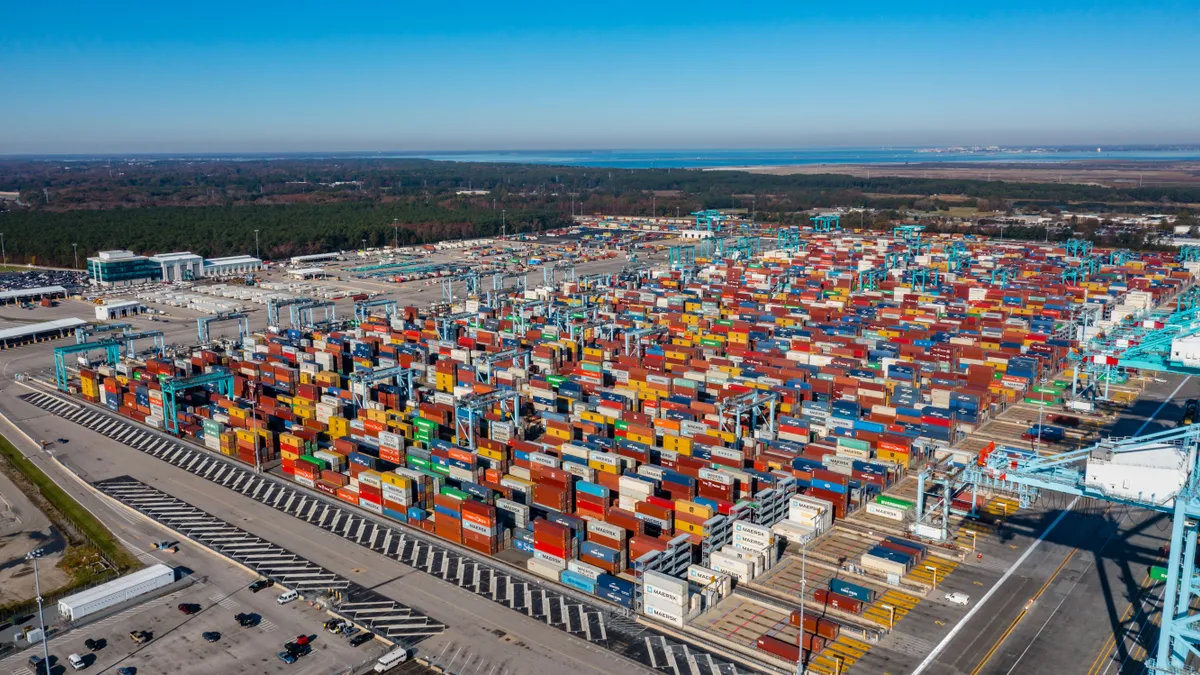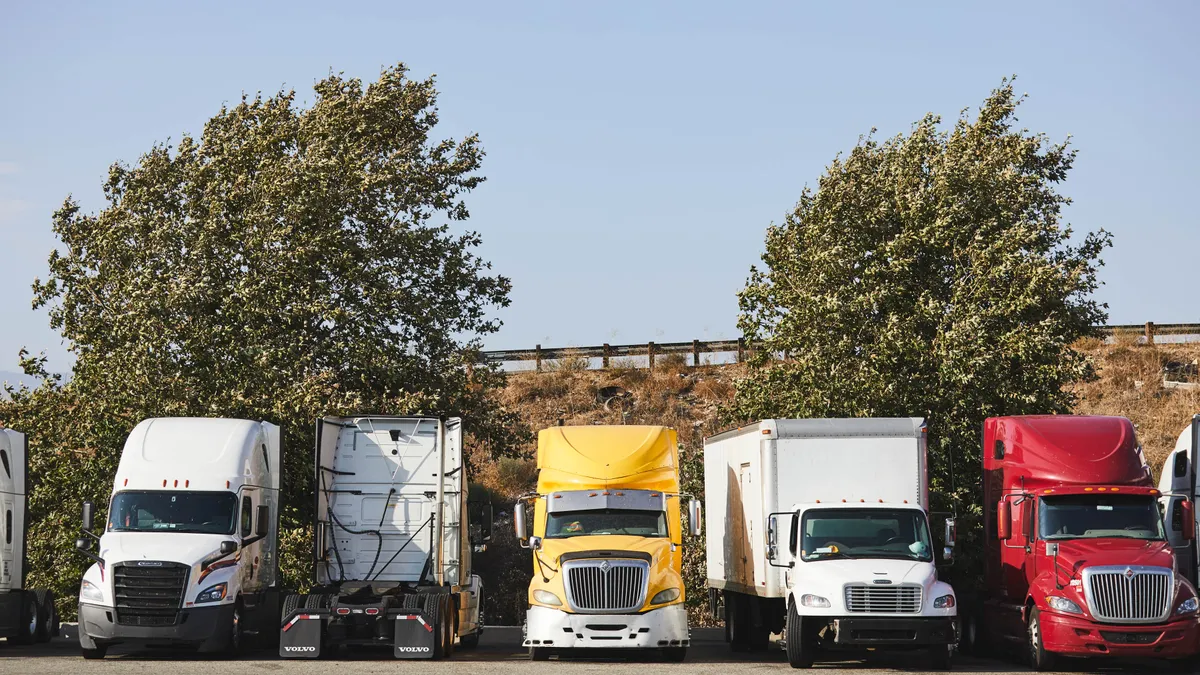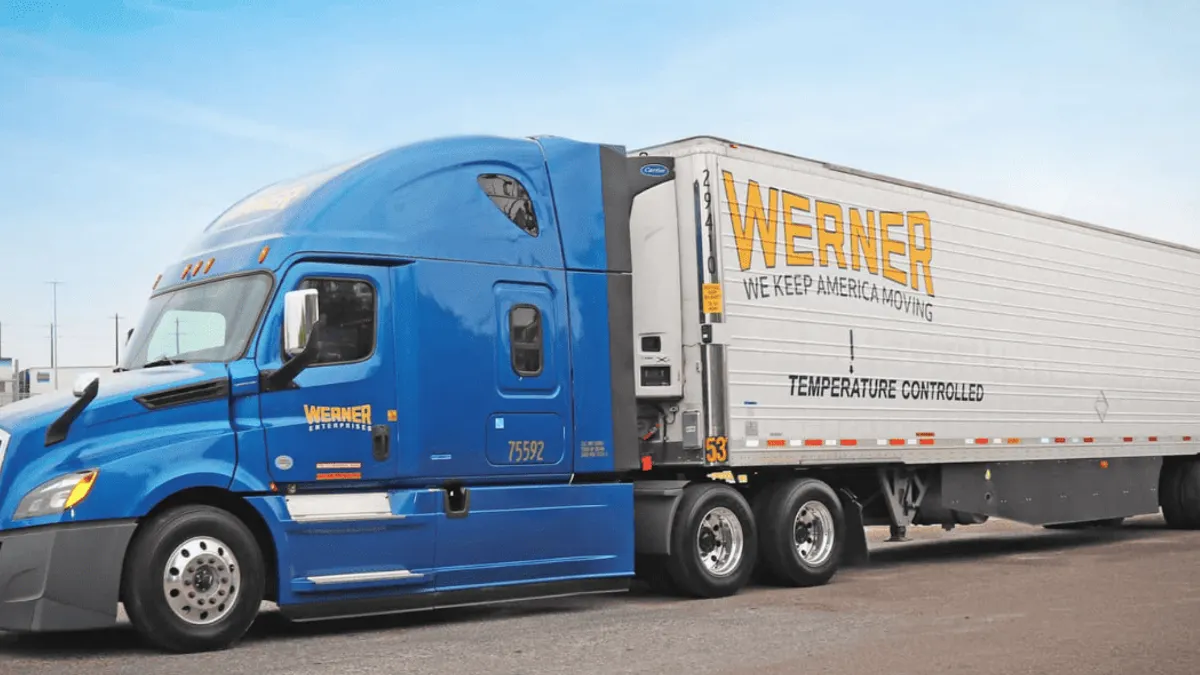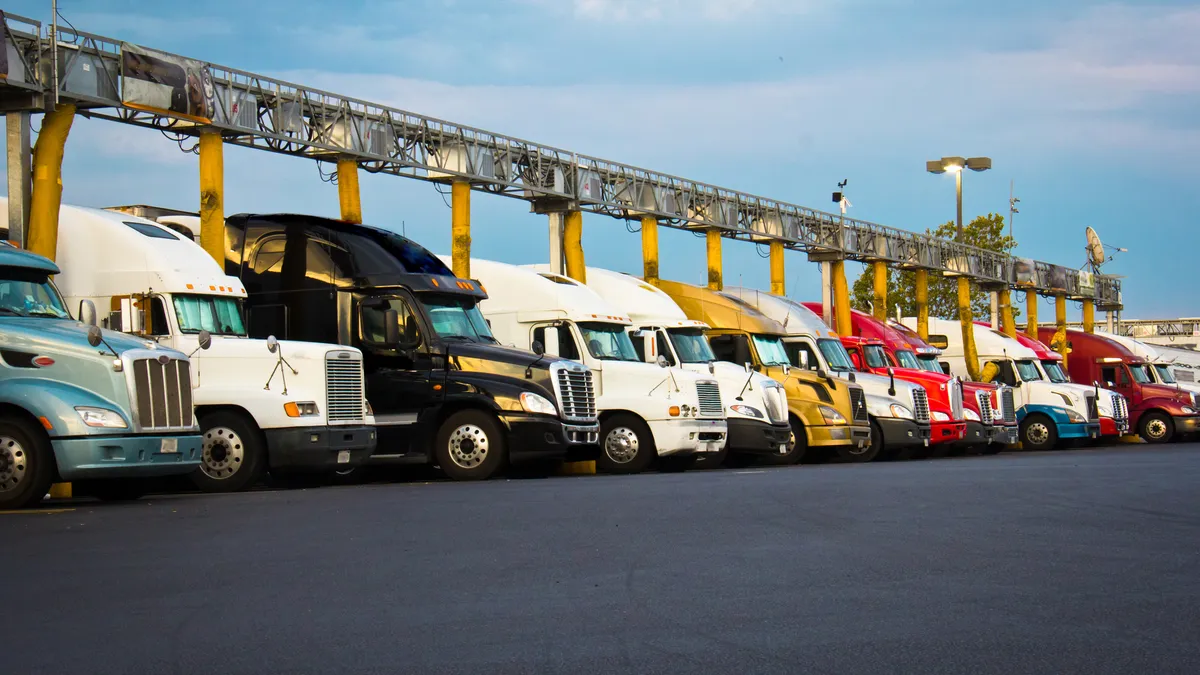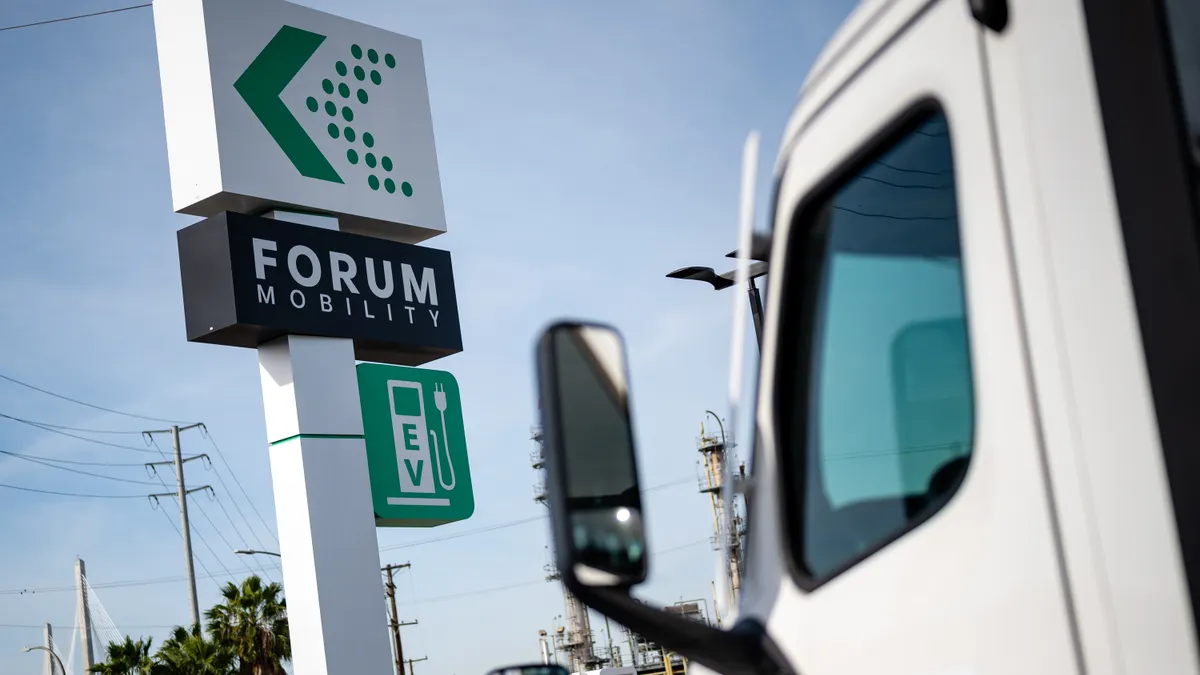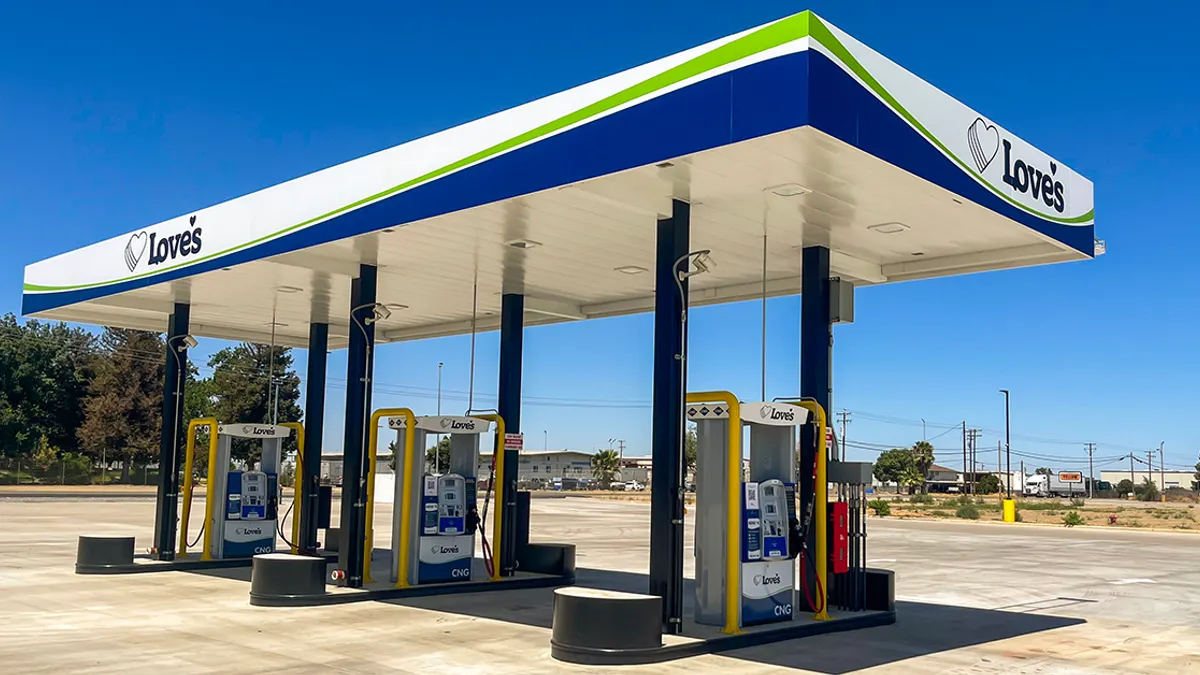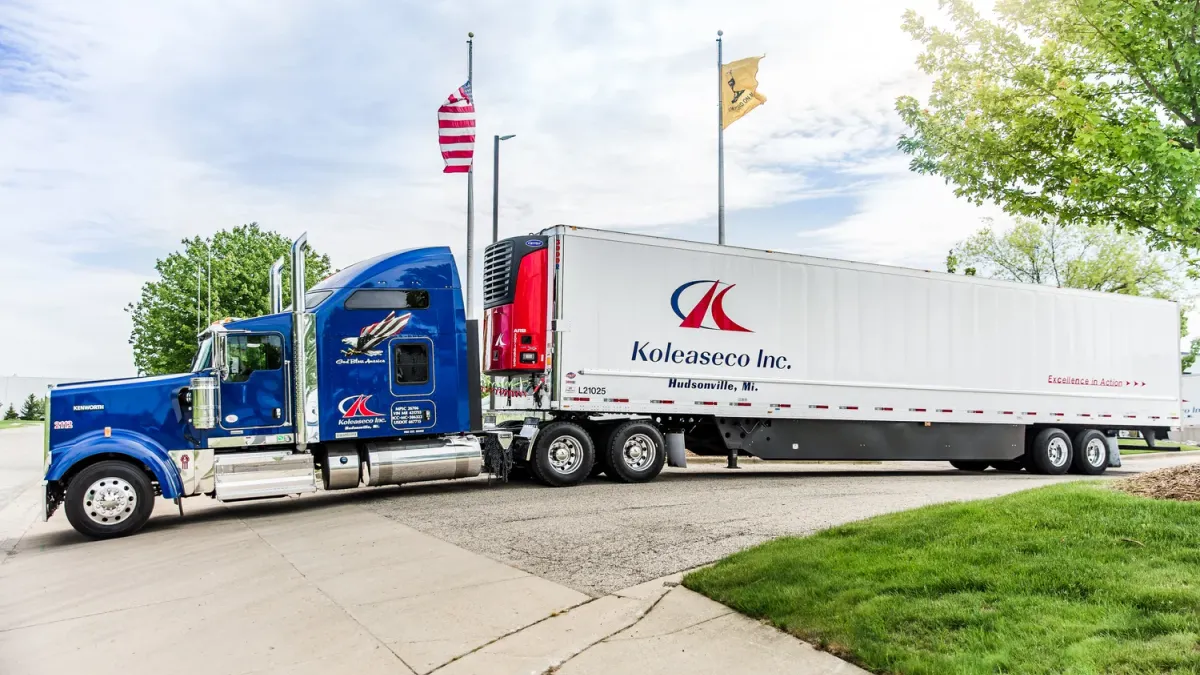Normality — at least what passes as normality in 2020 and 2021 — seemed to be slowly returning to trucking lanes out of the Los Angeles area after months of supply chain congestion. The number of ships offshore the ports of Los Angeles and Long Beach in California had dropped in late March, from its peak in February.
As drayage and dockworkers got the containers off ships and onto trucks or trains, headed toward warehouses, TL spot rates steadily declined, according to Dean Croke, DAT principal analyst. On average, TL spot rates out of Los Angeles or Ontario, California, dropped 7 cents for the week ended March 21, coming in at $2.84 per mile, Croke said.
"It looked like they had started to catch up," said Croke.
But the latest numbers indicate imports show no sign of long-term decline, signaling elevated spot rates and tight capacity for the trucking market.
For the week ended March 28, Los Angeles and Ontario made it back into DAT's top 10 for load post volume, "as import volumes continue to hit record levels," Croke said. "After dropping for most of March, outbound load post volumes jumped 18% week over week in Los Angeles and 7% week over week in Ontario."
Croke said weekly capacity out of the ports, generally tight, depended on which outbound lane was used more heavily by trucks. Capacity eased in Los Angeles, with rates dropping 1 cent per mile to $2.81 per mile, for the week ended March 28. In Ontario, capacity tightened and pushed rates higher by 2 cents per mile, to $2.90 per mile, Croke said.
More ships anchor, waiting their turn to berth
Complicating the port congestion picture is the tale of the Ever Given, a massive container ship that got stuck in the Suez Canal on March 23. The ship lingered there for days, finally dislodged on Monday. Croke said before the Ever Given was freed, it was too early to tell if the ramifications of a jam in the Suez Canal will affect U.S. TL spot rates.
Congestion at the California ports, combined with surging e-commerce demand, means U.S. retailers' efforts to replenish inventories could again stretch into summer and beyond, Croke said. And the only way inventories can be replenished is if shippers engage with the TL spot market, and that could mean strong rates for many weeks.
A long way from TP woes
A year ago, it was toilet paper and other household goods that the trucking industry scrambled to deliver to consumers. The initial panic buying of the U.S. coronavirus saga shot TL spot rates up for a few weeks, before rates crashed.
But U.S. inventories were low in mid-2020. The pandemic, once feared to be an economy-killer, kept millions of people at home for much of 2020. People saw a need to fix up their houses or apartments, and also make lifestyle changes. That led to more online shopping, which further eroded inventory levels.
Spot rates slowly rose beginning in May, as shippers and retailers realized they had empty warehouse spaces. E-commerce surged and TL rates went up.
Today, with California ports congested, it's not toilet paper or personal protective equipment that is driving shortage mitigation. Delayed off the coast of the Golden State are Pelotons, sneakers, semiconductors, petrochemicals — a mix of consumer and industrial needs that are likely to keep spot rates elevated and truckers busy.
Spot rates keep their momentum
Retailers and shippers replenishing their inventories will have to order trucks on the TL spot market to service the import surges into the California ports, at a time when capacity was already tight and a driver shortage was already bedeviling the industry.
"It's going to keep capacity tight and keep spot rates high," said Croke. "I think it's a big thing for trucking."
Most of the movement out of the ports is drayage or short haul, Croke said, with only a tiny fraction as long haul. The No. 1 outbound lane is north, to Stockton, California, Croke said, accounting for 9% of all of DAT's U.S. load volumes. Stockton is a strong warehouse market as a result of the proximity to ports, he said. From Stockton, loads are staged to points north, west and east.
The rates from Los Angeles to Stockton are up to $3.31 per mile now. In February, the rate was $3.09 per mile. A year ago, the rate was $2.18 per mile.
Another big destination for the ports' cargo is Dallas. Spot rates from Los Angeles are $2.85 per mile versus $1.24 a year ago, Croke said.
Rates rise on Los Angeles outbound lanes
But the demand is mostly one-way. The rate from Stockton to Los Angeles is $1.36 a mile, Croke said, down from $1.47 per mile in February. Less volume is returning to the ports, partially because U.S. exports are down, and partially because there is a worldwide container shortage.
Still, the elevated spot rates outbound are here for a while, Croke said, as the congestion keeps upward pressure on rates.
"We could see this going on for the next three to four months," said Croke.
Big ports, big problems
The Port of Los Angeles had its busiest February in its 114-year history, with a 47% increase in TEUs YoY, said Gene Seroka, executive director of the Port of Los Angeles, briefing the public on March 16. It was also the seventh consecutive month of year-over-year increases, Seroka said.
"Consumer buying has not let up," Seroka said during the briefing. "The National Retail Federation forecasts its sales among its members will increase in the year 2021 between 6.5% and 8.2% over 2020."
The ports of Long Beach and Los Angeles handle the lion's share of incoming freight from Asia, with 2 billion square feet of transloading space in Southern California, according to Ken Duncan, managing director of commercial operations at the Port of Long Beach. Long Beach has six container terminals, and Los Angeles has seven.
"It's going to keep capacity tight and keep spot rates high."

Dean Croke
Principal Analyst at DAT
The demand for the ports' services also means bigger problems than smaller ports for stakeholders that interact with the port, including trucking firms.
Once at the port, a container ship takes five to six days to unload. East Coast ports don't see such time offloading, because ships will often make multiple port calls, said Duncan.
Another familiar headache — chassis management — was initially a problem during the surge but has now subsided, Duncan said.
The ports can only accommodate so many drayage trucks at terminals. And the ports have also been enforcing social distancing, causing dock work to slow, according to Josh Brazil, vice president of ocean analytics for project44.
"It's never quite happened like this before," said Brazil. "They are not able to get enough equipment to handle this."
And when the two ports get the sniffles, the supply chain can catch a cold. Delays pile up. Croke said when ships are anchored away from the port and delayed up to 21 days, intermodal agents will miss their window for transporting the freight. That drives the shipper to the TL spot market, Croke said.
Yet it was not the day-to-day issues at the ports that have caused the congestion and elevated spot rates. Rather, it was the import surge, the economy rebounding and a familiar national headache — the driver shortage — which have all contributed to the congestion and the booming spot rates, Croke said.
Referring to a shortage of drivers, Croke said capacity has not caught up with demand, and that is particularly true at the ports.
The blending of issues has come together at the two ports, astounding analysts.
"We've pretty much never seen a bottleneck like this before," said Tim Denoyer, senior analyst and vice president of trucking for ACT Research.


